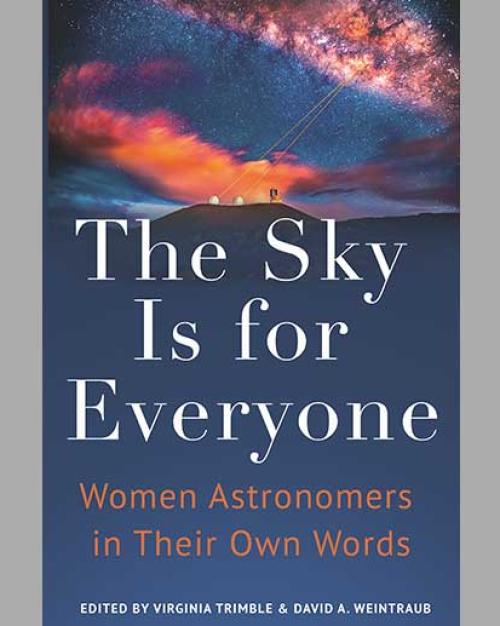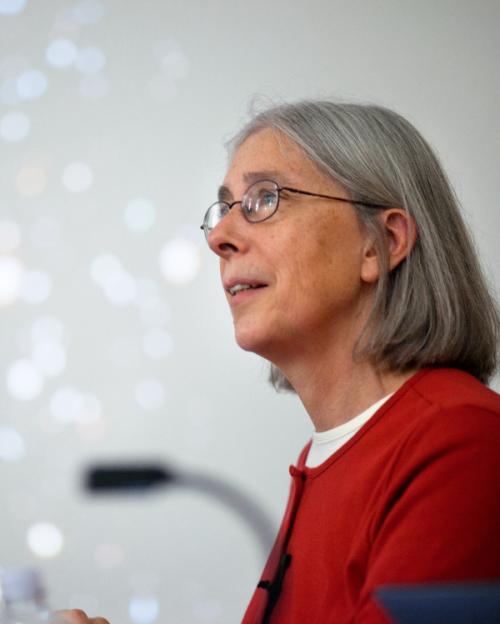When Martha Haynes was thirteen years old, her brother convinced her to give him a big chunk of her babysitting money so he could buy a telescope. He never used it much, but Haynes found the night sky fascinating.
“I remember showing the rings of Saturn and the moons of Jupiter to a couple of passing police officers one night,” she wrote. The thrill she got from explaining to them what they were seeing has never left her.
“To me, interacting with students inside and outside of the classroom is the greatest reward of my academic profession,” wrote Haynes, Distinguished Professor of Arts and Sciences in Astronomy in the College of Arts and Sciences. Her chapter, “Hands on Adventures with Telescopes: From the Backyard to Cerro Chajnantor,” appears in “The Sky Is for Everyone: Women Astronomers in Their Own Words,” edited by Virginia Trimble and David A. Weintraub.
“The Sky” is a collection of autobiographical essays by “women who broke down barriers and changed the face of modern astronomy,” according to the editors.
Haynes’ position as a pioneer in the field has been recognized before; she is only the second woman to receive the prestigious Henry Draper Medal from the National Academy of Sciences in its 136-year history. She shared the award with Riccardo Giovanelli, professor emeritus of astronomy (A&S), for constructing “the first three-dimensional view of some of the remarkable large-scale filamentary structures of our visible universe.”
She is also the recipient of the Catherine Wolfe Bruce Gold Medal lifetime achievement award from the Astronomical Society of the Pacific, a member of the American Academy of Arts and Sciences and the National Academy of Sciences and a fellow of the American Association for the Advancement of Science.
Haynes’ career studying galaxies spans both radio and optical astronomy, as an astronomer at the Arecibo Observatory and at the National Radio Astronomy Observatory. She was instrumental in the Arecibo Legacy Fast ALFA Survey (ALFALFA), leading the Undergraduate ALFALFA Team in its search for gas-bearing galaxies. She has also been involved with the Atacama Large Millimeter Array (ALMA).
Her longtime focus – she calls it her “dream discovery machine” – is the Fred Young Submillimeter Telescope (FYST), now being built above ALMA near the summit of Cerro Chajnantor, a peak in Chile’s Atacama Desert.
The 6-meter telescope will be “scientifically transformational,” wrote Haynes, providing insights into the first star-forming galaxies born after the Big Bang, as well as how stars and galaxies form and the dark-energy-driven expansion of the universe. Haynes chairs the board of directors of the Cerro Chajnantor Atacama Telescope (CCAT) consortium, which is building the telescope.
Haynes closed her chapter in “The Sky” with some advice for young people: “Follow your dreams to wherever they lead you,” and, she added, “be sure to enjoy it.” She herself has found “success and satisfaction,” she wrote, demonstrating that she has indeed taken her own advice.
Read this story in the Cornell Chronicle.





